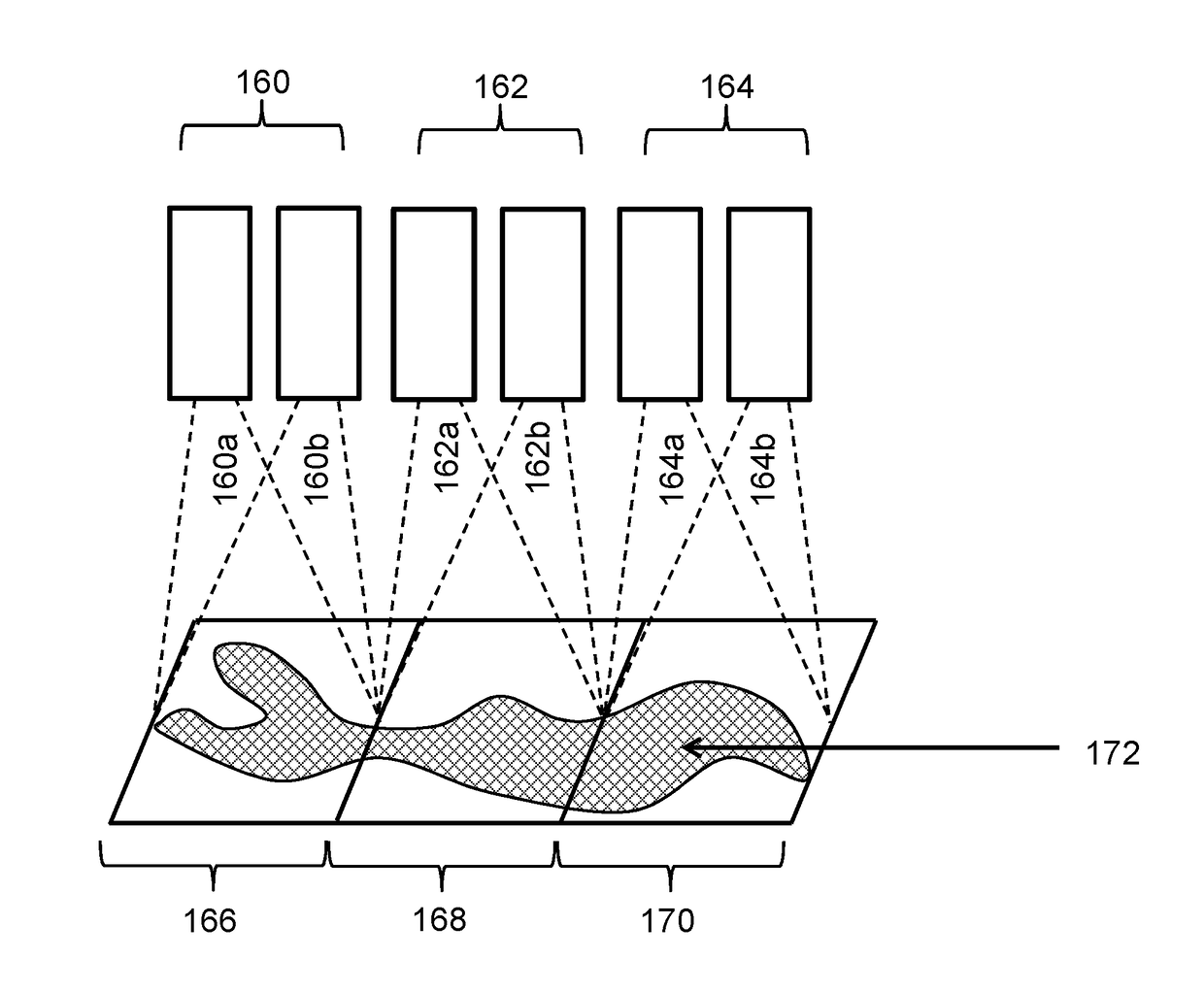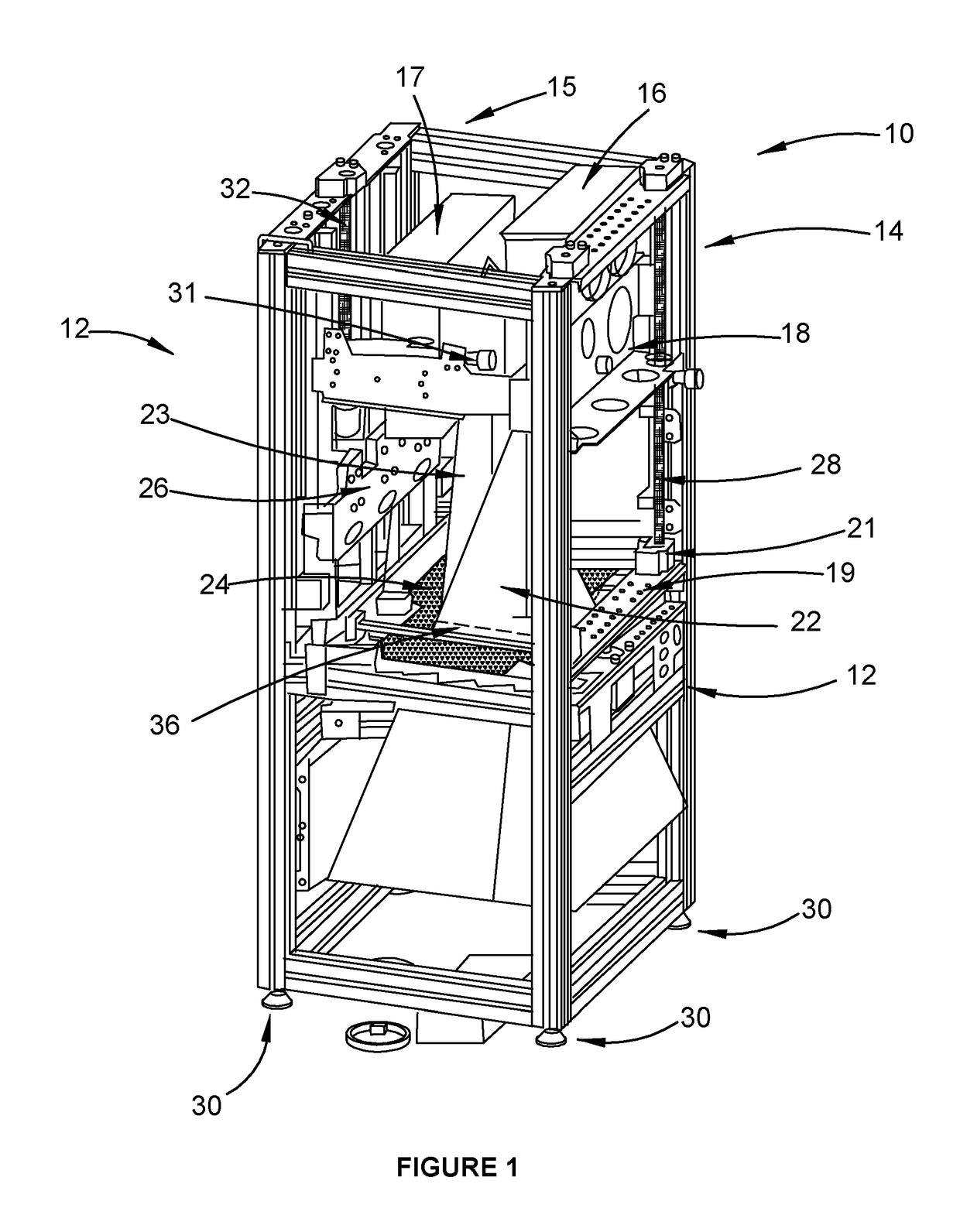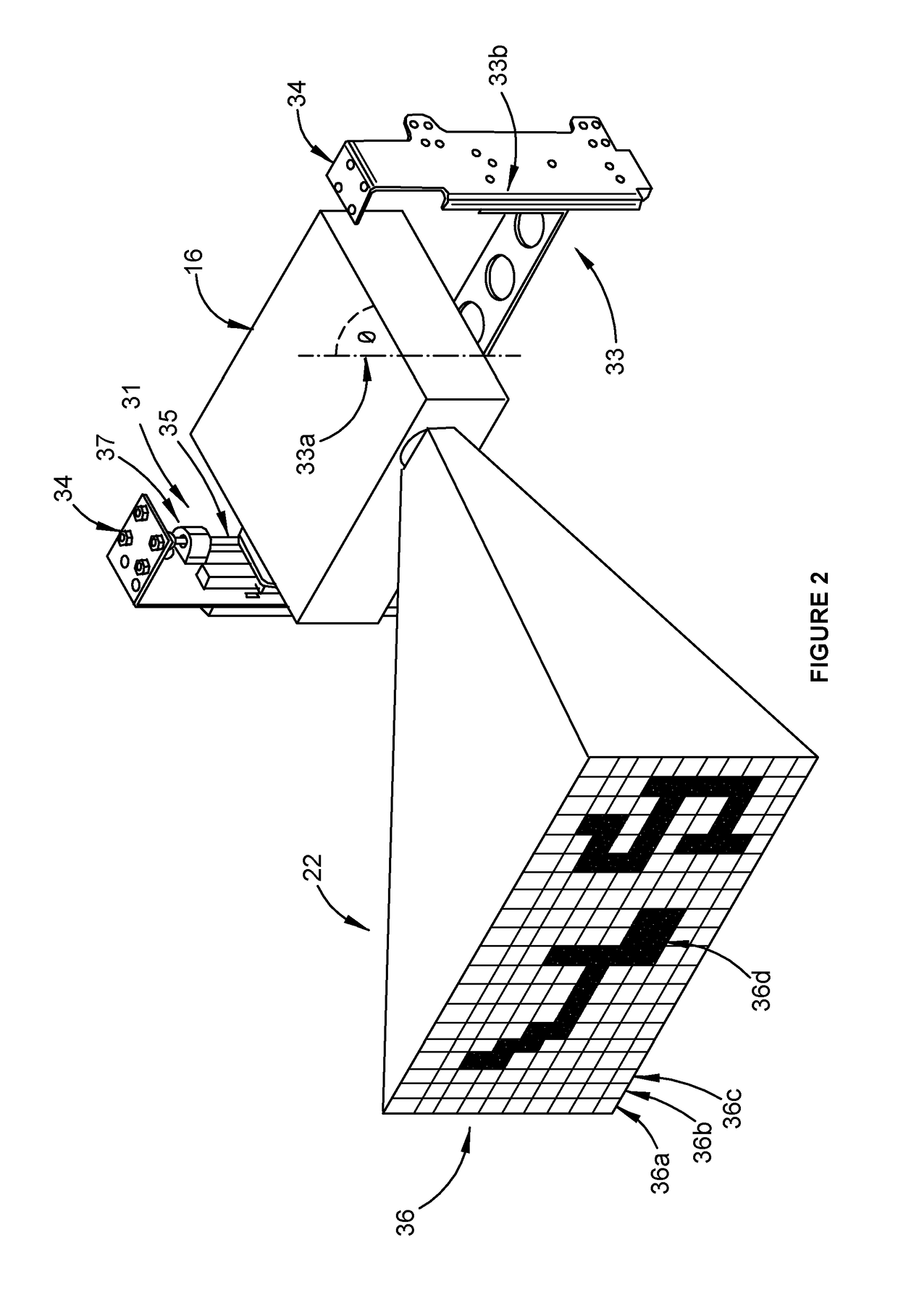Improvements in 3D printing
a 3d printing and improvement technology, applied in the field of 3d printing, can solve the problems of molten plastic to solidify often the rate limit step, the speed of creating objects remains an issue, and the time required, so as to improve the resolution of printed articles, reduce the penetration depth, and improve the effect of resolution
- Summary
- Abstract
- Description
- Claims
- Application Information
AI Technical Summary
Benefits of technology
Problems solved by technology
Method used
Image
Examples
Embodiment Construction
[0074]A 3D printer 10 is shown in FIG. 1. The printer 10 is made from a frame 12 that has vertical supports 14 and horizontal supports 15 to define a hollow supporting structure. The length of the vertical supports 14 are longer than the length of the horizontal supports 15. However, as should be appreciated, the length of the vertical and horizontal supports may be of any length, and the length may be determined by the size of the article being printed. The vertical supports 14 and horizontal supports 15 can be made from any material suitable to construct such a frame. In an embodiment, the supports are made from aluminum. In an embodiment, the supports are made from a plastic and / or fibre reinforced plastic. Located at the base of the frame 12 are feet 30. The feet 30 are individually adjustable to allow the article plate 24 to be substantially level. However, other levelling means known in the art can also be used to level the printer 10, for example, hydraulic or air cushions an...
PUM
| Property | Measurement | Unit |
|---|---|---|
| temperature | aaaaa | aaaaa |
| temperature | aaaaa | aaaaa |
| temperature | aaaaa | aaaaa |
Abstract
Description
Claims
Application Information
 Login to View More
Login to View More - R&D
- Intellectual Property
- Life Sciences
- Materials
- Tech Scout
- Unparalleled Data Quality
- Higher Quality Content
- 60% Fewer Hallucinations
Browse by: Latest US Patents, China's latest patents, Technical Efficacy Thesaurus, Application Domain, Technology Topic, Popular Technical Reports.
© 2025 PatSnap. All rights reserved.Legal|Privacy policy|Modern Slavery Act Transparency Statement|Sitemap|About US| Contact US: help@patsnap.com



